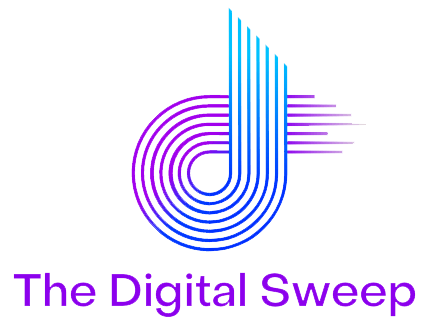A study by ARtillery Intelligence indicates that by 2024, VR revenues will reach $12 billion. Did you also know that the global consumer virtual reality software market is estimated to reach a value of 1.9 billion U.S. dollars?
People are using VR software more, so as a marketer. Therefore, you should consider adding campaigns that leverage VR technologies to your arsenal.
Applications of VR marketing cover a wide range of industries. Read on to learn some of the top examples.
Travel Industry: The Pioneer of VR Marketing
The travel agency Thomas Cook introduced a mobile VR app called “try before fly” that allowed customers to go on a virtual journey in a Thomas Cook plane and experience various videos featuring real pilots and cabin crew taking place in different plane classes.
A similar campaign was carried out by the Japanese airline Nippon Airways to promote its upgraded business class seat allowing its customers to experience the comfort of the seats in a virtual interactive environment. They could order food, modify the lighting, enjoy a movie, and open and close the cabin’s doors.
VR Marketing Enables Interior Visualizations.
Interior design companies leverage VR technology to reflect in-person experiences in virtual showrooms. The advantage for the customers is clear: they don’t need to leave their homes to design their next perfect décor.
In the furniture brand Boconcept’s virtual showroom, for example, visitors can browse catalogs, learn about the collections, and get advice from interior designers.
Customers Can Try On Make-Up.
Cosmetics brand Sephora’s VR app is a VR marketing example from the beauty industry. The app has a built-in library of virtual products so that customers can invent their own makeovers with hundreds of different combinations. The app uses facial recognition technology to scan the face and lips, and eyes of the customers and offer product suggestions.
Visualization of a Test Drive
Volvo also launched a virtual campaign called Volvo Reality. It was an immersive journey taking place on the roads of Vancouver. Users were able to see the surroundings as if they were really inside the car. The experience was created to be compatible with Google Cardboard.
Training Customers
Another VR marketing campaign launched with Google Cardboard was that of Lowe’s Innovation Labs. The Holoroom, a virtual reality clinic, taught customers how to undertake a shower renovation in a virtual environment. Thanks to the immersive training experience, beginner-level DIYers could turn into experienced ones.
Another initiative in this regard was that of the pharmaceutical company GSK. The team launched a virtual simulator that functions as a migraine experience. The purpose was to give the users an idea of what it is like to have a migraine. The simulator educated them about the process a migraine sufferer goes through, particularly by providing auras and light sensitivity that are common among migraine patients.
Into the Metaverse
Many brands are launching virtual experiences in the metaverse, which, in simple terms, is basically a VR experience in gamified environments.
The restaurant chain Chipotle famous for its Mexican food, launched a burrito builder game inside Roblox. The gamers were able to roll virtual burritos and, in return, earned in-game currencies. The event took place on National Burrito Day in the USA, and participants could convert their virtual currencies into free virtual items, in-game assets, and real burritos. The campaign was, thus, also a crossover between the real-world and virtual worlds.
Let Your Customers Witness the Positive Impact they Make
The shoe brand TOMS used VR technology to run a donation campaign named Virtual Giving Trip. For every pair of shoe customers bought in stores, a pair of shoes were donated to a child in need. TOMS employees and partners went on real-life giving trips to gift the shoes to children, and customers could witness these trips thanks to VR experiences that were available in TOMS physical stores.
Simulation of an Exciting Hiking Adventure
In order to promote its hiking boot Capra, the shoe company Merrell created a VR experience where users took a dangerous hiking tour. They tried the boots virtually for crossing narrow pathways through mountains, overcoming other obstacles, and enjoying the spectacular view while exploring the features of the boots.
A Boat-Themed Experience
Another adventure VR exhibit was the Progressive Lake dash VR experience by Progressive, an insurance company. The exhibit featured an actual steering wheel, throttle, and advanced sensors. Trade show visitors participated in a race. The campaign attracted 20,000 visitors.
Moonwalk by Samsung
Samsung collaborated with NASA to create a 4D lunar gravity VR to enable virtual moonwalking. Users wore flight suits and participated in a moon mission.
Invite the Audience into the Production Process
The tequila company Patron designed a VR experience called the Art of Patron that provided the users with the opportunity of learning about the craft of producing tequila. For this purpose, the VR application allowed them to visit the company’s distillery in Mexico. Thanks to this experience, the tequila aficionados were able to observe how their favorite drink was aged and bottled.
Blending with Experiential Marketing
Some brands apply VR technologies along with their experiential marketing campaigns. Take, for example, the UK cheese brand Boursin. Their marketing team organized a cheese-tasting real-world event during which a live multi-sensory immersive VR experience occurred, which took guests into a virtual fridge full of product samplings.
Conclusion
VR marketing can cover a diverse range of commercial promotions, advertisements, and exhibits. It has been happening for years; we see many successful examples from big brands. Small marketers can also use it to offer virtual trade shows, increase brand awareness, and tighten customer-brand connections.














0 Comments